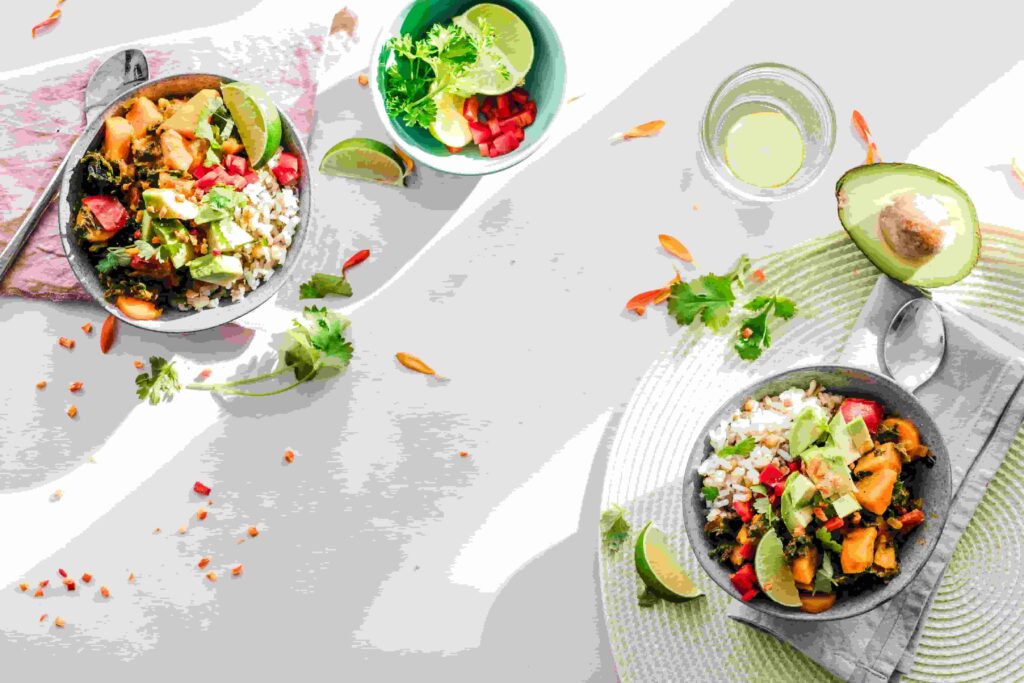Table of Contents

Portion control is essential for maintaining a healthy diet and achieving fitness goals. It helps manage calorie intake, prevents overeating, and promotes better digestion. Here are some effective strategies for portion control that you can easily incorporate into your daily routine.
1. Use Smaller Plates and Bowls
Using smaller plates and bowls can trick your brain into thinking you’re eating more than you actually are. This visual illusion helps you feel satisfied with less food. When your plate looks full, you are less likely to go back for seconds. Try using a salad plate instead of a dinner plate for your main meals.
2. Measure Your Food
Measuring your food can give you a better understanding of portion sizes. Use measuring cups, spoons, and a kitchen scale to measure out servings, especially for calorie-dense foods like nuts, cheese, and pasta. This practice can help you become more aware of how much you are eating and prevent overeating.
3. Be Mindful of Serving Sizes
Pay attention to the serving sizes listed on food labels. Many packaged foods contain multiple servings, so it’s easy to eat more than intended. Compare the serving size to the amount you typically eat and adjust accordingly. You might be surprised at how different the portion sizes are from what you usually consume.
4. Eat Slowly
Eating slowly allows your brain to register that you are full. It takes about 20 minutes for the brain to receive the signal that you have eaten enough. By eating more slowly, you give your body time to feel satisfied, which can prevent overeating. Chew your food thoroughly and savor each bite.
5. Avoid Eating Directly from Packages
Eating directly from a package, like a bag of chips or a box of cookies, can lead to mindless overeating. Instead, portion out a serving into a bowl or plate. This practice helps you keep track of how much you are eating and prevents you from consuming the entire package without realizing it.
6. Use Your Hand as a Guide
Your hand can be a useful tool for estimating portion sizes. For example, a serving of protein (like meat or fish) should be about the size of your palm, a serving of carbohydrates (like rice or pasta) should be about the size of your fist, a serving of fat (like butter or oil) should be about the size of your thumb, and a serving of vegetables should be about the size of your open hand. This method is especially helpful when you don’t have measuring tools available.
7. Fill Half Your Plate with Vegetables
Vegetables are low in calories and high in fiber, which can help you feel full without consuming too many calories. Filling half your plate with vegetables can naturally reduce the portion sizes of higher-calorie foods. Plus, you’ll benefit from the vitamins and minerals that vegetables provide.
8. Start with a Glass of Water
Drinking a glass of water before meals can help you feel fuller and prevent overeating. Sometimes, thirst is mistaken for hunger, leading to unnecessary snacking. Staying hydrated can help you distinguish between true hunger and thirst.
9. Plan Your Meals and Snacks
Planning your meals and snacks ahead of time can help you control portions and avoid impulsive eating. Prepare balanced meals with appropriate portion sizes and include healthy snacks to keep you satisfied throughout the day. Having a plan can reduce the temptation to grab unhealthy options when you’re hungry.
10. Practice Mindful Eating
Mindful eating involves paying full attention to the experience of eating and drinking. It means being aware of the flavors, textures, and smells of your food, as well as your body’s hunger and fullness signals. Avoid distractions like watching TV or using your phone while eating. This practice can help you enjoy your food more and recognize when you are satisfied, preventing overeating.
11. Listen to Your Body
Your body gives you signals when you are hungry and when you are full. Learn to listen to these signals and eat accordingly. Eat when you are hungry and stop when you are full, even if there is food left on your plate. This practice can help you develop a healthier relationship with food and avoid overeating.
12. Don’t Skip Meals
Skipping meals can lead to extreme hunger, which often results in overeating later. It’s important to eat regular meals to maintain steady energy levels and control hunger. Include balanced meals with protein, healthy fats, and fiber to keep you satisfied.
13. Limit Distractions
Eating while distracted can lead to mindless eating and consuming more than intended. Focus on your meal and enjoy the experience of eating. This can help you recognize when you are full and prevent overeating.
14. Serve Food in the Kitchen
Instead of placing serving dishes on the table, serve your food in the kitchen and bring only your plate to the table. This practice can reduce the temptation to have second helpings and help you stick to appropriate portion sizes.
15. Share Restaurant Portions
Restaurant portions are often much larger than what you need. Consider sharing a meal with a friend or family member, or ask for a to-go box when you receive your meal and immediately pack away half of it. This can help you avoid overeating and enjoy your meal without feeling stuffed.
16. Keep Unhealthy Snacks Out of Sight
Keeping unhealthy snacks out of sight can reduce the temptation to eat them. Store them in a cupboard or pantry where you are less likely to see them. Instead, keep healthy snacks like fruits, vegetables, and nuts easily accessible.
17. Enjoy Treats in Moderation
It’s okay to enjoy treats occasionally, but practice moderation. Instead of eliminating your favorite foods, enjoy them in smaller portions. Savoring a small piece of chocolate or a scoop of ice cream can be more satisfying than depriving yourself and then overindulging later.
18. Practice Portion Control at Social Gatherings
Social gatherings often involve large amounts of food and drinks. Be mindful of your portions at these events. Fill your plate with smaller portions, choose healthier options, and avoid going back for seconds. Focus on enjoying the company and conversation rather than just the food.
19. Keep a Food Journal
Keeping a food journal can help you become more aware of your eating habits and portion sizes. Write down what you eat, how much you eat, and how you feel afterward. This practice can help you identify patterns and make adjustments to improve your portion control.
20. Be Patient with Yourself
Changing your eating habits takes time and practice. Be patient with yourself and make gradual changes. Celebrate your progress and don’t be too hard on yourself if you slip up. The key is to keep trying and stay committed to your goals.
Portion control is a crucial aspect of maintaining a healthy diet and achieving your fitness goals. By incorporating these strategies into your daily routine, you can develop healthier eating habits and enjoy your meals without overeating. Remember, it’s not just about what you eat but also how much you eat. With practice and patience, you can master portion control and lead a healthier, more balanced life.




